Children Of The Revolution
Venus La Universal
Dido la Universal Montsant Garnacha Blend 2019
Bodegas Muga
Reserva Rioja Tempranillo
Founded in 1932 by Isaac Muga Martínez, now run by children Manuel, Isabel & Isaac Muga Caño. Deep Ruby, aromas of sweet red and black fruits with pepper spice, unmistakable Muga. 4 grape blend from the Haro district (70% Tempranillo, rest Garnacha, Mazuelo & Graciano), palate shows cherry and currant flavors with espresso, vanilla & toasty oak tones. Soft full tannins, lively acidity on a medium+ finish ending with an earthy mineral character. Nice value! Great vintage! — 5 years ago
Clos du Jaugueyron
Haut-Médoc Red Bordeaux Blend 2016
Nice Bordeaux, which I just like, tasty, not oaky, but a pleasent red wine from the old part of winemaking, good Q/P , no revolution here🇫🇷🍷🤗 — 6 years ago
Clos Mogador
Priorat Red Blend 2015
The 2015 Clos Mogador is a absolutely stunning release from this historic Priorat estate. Located in Gratallops, in the heart of the Priorat hills, René Barbier, one of the founders of the Priorat revolution, crafts an incredible blend of 40% Garnacha (lauched from 80 year old vines), 35% Cabernet Sauvignon, 20% Syrah and 5% Morvedre, Pinot Noir, and Merlot. This immediately reveals seductive aromas of red cherry preserves, rose petals and roasted figs. On the palate this is ripe and intense, yields bright flavors of orange rind, red cherry and red raspberry with wild thyme and garrigue flavors. Intoxicating and beautifully structured, this beautiful wine will evolve gracefully for many years to come. Drink 2019-2040- 95 — 7 years ago
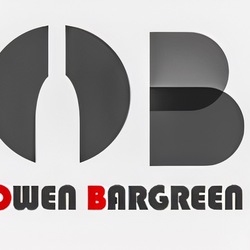
Revolution Wine Company
El Libertador Mendoza Cabernet Sauvignon
Smooth and rich - a cab from the land of Malbec! What a lovely idea! Highly enjoyable. Another great find at #moraswinetasting ! — 7 years ago
Gosset
Celebris Vintage Extra Brut Champagne Blend 2002
Selected to celebrate the wedding of Prince Harry to Meghan Markle. Pale to mid Gold. Complex yet fresh which must be the aim of every Champagne maker hence RD and P2 etc. The Gosset has spent 12 years on Lees and no malolactic fermentation which gives it a charge of malic acid providing longevity for years to come. Lemon and Apple notes. As Tyson Stelzer said “Children of 2002 meet your 30th Birthday Present “ Finishes with a Saline minerality. 48% Pinot Noir; 52% Chardonnay. A wonderful Champagne. — 7 years ago
Jacques Selosse
Substance Brut Blanc de Blancs Grand Cru Champagne Chardonnay
The revolution of Champagne wine making. Anselme Selosse turns his vision, belief and work in to this masterpiece.
A solera of Avize Chardonnay created in 1986.
Disgorgement date 10/13/2014 #champagne #chardonnay #selosse #substance #solera #shreveport #bossiercity #winemaking — 8 years ago
Umberto Bortolotti
Extra Dry Valdobbiadene Prosecco
To all the children of North East Italy who cannot play soccer because the fields are taken over by the Glera grape. — 4 years ago
Domaine Michel Magnien
Vieilles Vignes Vosne-Romanée Pinot Noir 2016
This comes from two vineyards with vines planted in 1902 and 1920. The soils are calcareous marl and clay. The wine is a pure expression of its terroir thanks to its élevage in a combination of used oak and clay jars. The wine shows ripe and fresh red-fruit aromas on the nose with Asian spice and rose petals. Medium weight and moderate tannins follow on the palate with a concentration of flavor that is typical of old vines and wholecluster fermentation. They say Michael Magnien follows the rhythm of moons synodic revolution at each stage. — 5 years ago
Château de Villegeorge
Cru Bourgeois Haut-Médoc Red Bordeaux Blend 2010
To fully understand the Lurton family one needs to be a professional genealogist, but if you meet a Lurton in Bordeaux it would be safe to bet she/he is involved in wine business. Marie-Laure is one of the 10 children of Lucien Lurton, and she owns Chateau de Villegeorge in Haut-Médoc and Tour de Bessan in Margaux. Villegeorge 2010 is blend of Cabernet Sauvignon (79%) and Merlot (21%). Attractive nose of cassis, cedar wood and violets. Still plenty of very ripe fruit at 10 years old, good concentration and length. Fine value today at 28 euro. — 5 years ago
Luca Wines
Laborde Double Select Uco Valley Syrah 2015
Had another bottle, Wow! Laura Catena, 4th gen winemaker, grew up in Argentine-Italian winemaking family in Mendoza. Wines, named after her children - Luca, Dante & Nicola - background of the label is the McDermott coat of arms of her American husband, Daniel McDermott. Single-vineyard wine from land belonging to the Laborde family. Deep red with big ripe fruits & smoky oak. Palate plum & jammy blackberry, spice with nice earthy character. Tannins are a bit rustic, lingering ending with toasty oak & spice. — 7 years ago
Bodegas Muga
Selección Especial Rioja Tempranillo 2012
Founded in 1932 by Isaac Muga Martínez, on his death children Manuel, Isabel and Isaac Muga Caño took over. Dark Ruby with aromas of ripe fruit, smoke & spice, A blend of Tempranillo, Garnacha, Mazuelo, & Graciano from this top Haro producer. On the palate, ripe fruit, cherry & blackberry, firm dry tannins, & smoky oak. Aged 30 mos in French & American oak + 18 months in the bottle before release. On the finish a touch of vanilla with a lingering ending. Will continue to improve! Nice! Small production. — 7 years ago
Mas Gourdou
Pic St. Loup Syrah 2016
The photo does the wine no justice. Also consumed at our farm table dinner, this is from a winery we’d visited earlier in the day. In the same family since the French Revolution, Mas Gourdou is a small operation producing a nice variety of Pic Saint Loup wines. This bottling, made up of Syrah, Grenache and Mourvedre, spends 12 months in used French Oak and offers up ripe berries on the nose with a silky palate of spice, earth and brambly fruit. A beautiful evening shared with the family - so fun to watch the appreciation of wine growing in the kids! — 7 years ago
Aramenta Cellars
Reserve Pinot Noir 2013
It's just me, Jill, and Darlene and she decided to head into the cellar and pluck this guy from her personal rack (2013). Darlene - I wish I was one of your six children and we could hang out with the ducks and drink this until your cows came home. Beautifully aged and stunningly different from the 2011 and 2014. There is a reason the 2012 is sold out and few bottles of this are left. — 7 years ago
Château La Tour de Bessan
Margaux Red Bordeaux Blend 2018
2018 vintage. Marie Laure Lurton is one of the 10 children of Lucien Lurton and she owns Château Villegeorge (Haut-Médoc) and this Château La Tour de Bessan. Both are very good and refined. The 2018 La Tour de Bessan (named after 13th century tower on the estate that is being restaured) is a blend of 60 % Merlot, 29% Cabernet Sauvignon and a rather high (11%) percentage of Petit Verdot. Dark red. In the nose a mix of red and black fruit, cedar and Petit Verdot violet. Margaux is mostly associated with elegance and this is a good example. The fruit is bright, the tannins are well-tamed and the acidity provides juiciness and balance. Intelligent winemaking with just the right extraction. Great value at 18 euros. Abv. 14,5 % but perfectly integrated. Another lovely 2018. — 5 years ago
Bodegas Muga
Reserva Unfiltered Rioja Tempranillo Blend 2015
Founded in 1932 by Isaac Muga Martínez, now run by children Manuel, Isabel & Isaac Muga Caño. Deep Ruby, aromas of sweet red and black fruits with pepper spice and oak. 4 grape blend from the Haro district (70% Tempranillo, rest Garnacha, Mazuelo & Graciano), 36 months in oak, palate shows elegant flavors of cherry and currant with espresso, vanilla & toasty oak tones. Soft full ripe tannins, lively acidity on a long finish ending with an earthy mineral character. Great vintage! — 5 years ago
Château Haut-Bailly
Pessac-Léognan Grand Cru Classé Red Bordeaux Blend 2010
Haut-Bailly Dinner in SF with Veronique Sanders of Haut-Bailly.
The 2010 is an excellent vintage but, it is for the later part of your life or your children.
This is drinking beautifully with a 4 hour decant. The structure & tension are just starting to their softening stage. The length and balance are in the forget about it range and will just get better & better. Ripe, stunning fruits of; blackberries, dark cherries, black raspberries, plum & a touch of blue fruits. Moist clay & top soils, stones, mint, graphite, fresh tobacco, dark cola, anise to black licorice with stunning, withering floral bouquet. Acidity is perfect. The finish is everything you want in a Bordeaux.
Definitely a 99-100 point wine in 15 years plus.
Served with the Cheese Plate; Red Hawk, Hop Along & Roquefort. @Mathilde French Bistro
Photos of; Clyde Beffa Owner of K&L Wine Merchants & Veronique Sanders, dinner menu & pairing, Veronique talking terroir/vintages & dinner guests. — 6 years ago
Cain Vineyard & Winery
Cain Concept The Benchland Napa Valley Cabernet Sauvignon Blend 2001
This baby continues to grow up but I think like every parent I have to say good bye as children do grow up - I will miss the older beauties from Cain - I just think they are better older
Still love the color - deep purple / no transparency at all with edges / smell is demonstrating maturity which has me worried ( just a little) / the wine is chewy dense full bodied after 18 years in a bottle / omg this is good / taste is not full bodied at all but finesse and delicate - with the most enjoyable finish - I love the integration of the franc and Merlot with cab in this vintage - always have - just a Tuesday night but why not enjoy a bottle with charisma and character that says good to see you old friend - smiling — 7 years ago
Château Lafite Rothschild
Carruades de Lafite Pauillac Red Bordeaux Blend 2003
On the nose, ripe; blackberries, sweet & sour dark cherries, cooked cherries & strawberries & hues of blueberries. Black tea, cola, soft baking spices; vanilla, light clove & cinnamon. Crushed rocks, stones, limestone, turned, moist black earth, tobacco leaf, saddle-wood, soft leather, dry & fresh dark red florals.
The body is medium edging toward full. The tannins pretty well resolved. The ripe fruits show the hot, ripe vintage. Blackberries, sweet & sour dark cherries, cooked cherries & strawberries & hues of blueberries black tea, cola, soft baking spices; vanilla, light clove & cinnamon. Crushed rocks, stones, limestone, tobacco with ash, some graphite, soft medium dark spice, turned, forest floor, powdery but edgy minerals, saddle-wood, soft leather, dry & fresh dark red florals with some violets on the finish.
This showed better with Ribeye. The Ribeye brought out a fuller, richer wine with even more complexity. 9.35-9.4 with the Ribeye. It just missed 9.2 on its own. It’s big brother the 03 “Lafite” is 💯 point Parker wine.
Photos of; Chateau Lafite, their oak vat fermenters, Estate wine and their magnificent barrel room.
Interesting history and producers notes...Lafite Rothschild has a long and interesting history dating back to 1234, even though the property was not in the Bordeaux wine business at that time.
It is has been largely believed that vines were already planted on their terroir. The owner of the estate at the time, Gombaud de Lafite left his mark, his name. Almost 1,000 years after he owned it, the Chateau is still named after him! The vines were probably in existence at Lafite for over a century, it was not until around 1680, the majority of vineyards of what we know of as Lafite Rothschild today were created. This is because on the 1680 estate manifest, there are six mentions of their Bordeaux vineyards. Jacques de Segur, earns credit for cultivating the vineyard as I wrote in my Colon Segur post last weekend. In 1695, Alexandre de Segur married Marie-Therese de Clauzel, heiress to Chateau Latour. So to dovetail that write up, within a generation, the Segur family married into two of the greatest Bordeaux vineyards, Chateau Lafite and Chateau Latour! When their son, Nicolas-Alexandre passed away, Chateau Lafite and Chateau Latour were separated.
In 1797, Chateau Lafite was sold again. In the deed of sale, Chateau Lafite was described as a Premier Cru of Medoc. This is one of the earliest mentions of what we know of today as Lafite Rothschild producing wines of what would later be classified as an 1855 First Growth.
At that time, of Lafite were managed by the Goudal family. The Goudal family were wine historians and were able to read accurate records and details of the viticulture and marketing plans for Chateau Lafite in the estates formative years. The Goudal family gets the credit for creating the cellar and saving many of the oldest bottles that remain in the cold, dark cellars, including their oldest bottle, the 1797 Lafite!
The start of the famous Rothschild family begins in 1744, with the birth of Amschel Meyer. Amschel Meyer began creating his fortune while working as a merchant at “Zum Roten Schild,” which eventually became the family name of Rothschild.
In 1798 his sons were sent to various cities to create their fortunes. Needless to say, his sons all prospered as did their children in turn. This eventually led to them wanting to own a Chateau in Bordeaux. So in 1853, Baron Nathaniel de Rothschild, an English member of the Rothschild family, purchased Chateau Brane-Mouton. As was the custom of the day, the new owner renamed it using his name and Chateau Mouton Rothschild was born.
This was followed in 1868, when James Rothschild, another member of the family purchased Chateau Lafite, which was now a coveted First Growth.
On 8 August, 1868, Baron James d’Rothschild purchased Chateau Lafite, which was sold at a public auction in Paris. It’s assumed, he bought the property for family competitive reasons looking to one up his brother, the owner of Mouton Rothschild. At that time, Mouton Rothschild was only a Second Growth at the time. But, that does not paint the entire picture. The 1855 Classification had not taken on the importance associated with it the we see it today. Plus, buying Lafite was a reasonable investment as the vineyard sold for about 8 times its earning potential.
The actual Chateau is one of the older structures in Bordeaux, as part of the building dates back to the later part of the 16th century. In 1868, the vineyard took up 135 hectares, of which 74 hectares were cultivated with vines. Production was much smaller in those days than it is today as it was between 4,000 and 5,000 cases.
Just three months after the purchase, Baron James d’Rothschild passed away and Chateau Lafite Rothschild became the joint property of his three sons; Alphonse Rothschild, Gustave Rothschild & Edmond Rothschild. Since 1868, Chateau Lafite Rothschild has remained in the hands of the of Rothschild family. The new owners renamed the estate Chateau Lafite Rothschild.
Jumping ahead to the modern age, in 1962, the Rothschild family added to their holdings when they purchased Chateau Duhart-Milon, a Fourth Growth vineyard also located in Pauillac. It was owned by the Casteja family for more than a century, Chateau Duhart Milon suffered from neglect and was in a awful condition. By the time Duhart Milon was obtained by the Rothschild family, the vineyard was down to only 17 hectare which required extensive renovations.
Baron Eric Rothschild, nephew of Baron Elie Rothschild, took over the management of Lafite Rothschild in 1974. Baron Eric Rothschild was part of the fifth Rothschild generation to inherit Chateau Lafite Rothschild. In 1984, the Rothschild family added to their holdings in Bordeaux with the purchase of Chateau Rieussec in Sauternes.
1987 was a difficult vintage, but because that was the year Lafite celebrated the inauguration of their wine new cellar, they had a lot to be excited about.
The new cellars were built under the supervision of Catalan architect Ricartdo Bofill, is both underground and circular, with a vault supported by 16 columns, giving the structure a majestic architectural style. The cellar holds 2,200 barrels, which is about 55,000 cases of wine. The construction took two years to finish and was completed in 1988.
Domaines Baron Rothschild became one of the first Bordeaux properties to invest in South America when they purchased Vina Los Vascos from a Chilean family. The owners of Lafite Rothschild continued expanding their holdings with the purchase of Chateau lEvangile in Pomerol from the Ducasse family, who owned the property for almost 100 years.
The wine making at Chateau Lafite Rothschild was managed by Charles Chevallier, who began his position in 1994. Charles Chevallier was replaced by Eric Kohler in January 2016. 2017 saw another change at the estate when Jean Guillaume Prats replaced Christopher Salin as the President of Domaines Baron Rothschild.
Perhaps, it’s the most refined of the First Growth. The wine, like all First Growth’s takes decades to mature. It has remarkable staying powers. Bottles of 1870 Lafite Rothschild discovered in the Glamis castle remain profound at more than 140 years of age! It is consider by many Master Sommeliers to be the best wine in the world.
Chateau Lafite Rothschild is one of the earliest major Bordeaux estates to bottle their own wine. In 1890, they bottled a large portion of the wine and again in 1906. Part of the estate bottling was due to requests from Negociants who were willing to pay more for Chateau bottled wines. Also, bottling was primarily done to combat piracy. At the time, it was known that merchants in some countries, like Russia were bottling cheap wine and placing labels from Lafite Rothschild on the bottles. The Koch’s famous Jefferson bottles were not the first attempt at counterfeiting.
Prior to 1996, some would say the property had its share of ups and downs. The 1960’s and 1970’s were not great for Chateau Lafite Rothschild. But since 1996, Lafite Rothschild has been producing some of the best wine in their history!
Sadly, only the wealthy can afford to purchase it. Price aside, there is no denying the level of quality. In 2003 Lafite Rothschild produced a wine that is possibly unequaled by the estate at any time in their long history. Hence, my purchase of their 03 second wine. 2009, 2010 and 2016 are not far behind.
Starting in about 2008, Lafite Rothschild became the most collectible wine from Bordeaux. Prices exploded due to demand from China as Chinese businessmen bought them as gifts or bribes depending on you look at it.
The reason this started was Lafite Rothschild paid for product placement on the number one rated Chinese soap opera on television. Characters in that show were pictured enjoying life with Lafite Rothschild and since then demand went through the roof as did priced.
However, Issac Newton had it right when he declared “What goes up, must come down.” Prices for Lafite Rothschild plummeted after 2011. By the difficult 2013, prices were finally starting to hold firm, but many of the vintages that were setting price records on a daily basis had lost close to 50% of their value.
Starting with the 2012 vintage, Chateau Lafite Rothschild began instituting anti-counterfeiting measures. From 2012 forward, to help fight, rampant counterfeiting, the estate places a seal of authenticity on the capsules of both Lafite Rothschild and Carruades de Lafite. The seal features a unique, numbered code that can be checked on their website, to verify if the wine is real.
The 112 hectare vineyard of Chateau Lafite Rothschild is planted to 70% Cabernet Sauvignon, 25% Merlot, 3% Cabernet Franc and 2% Petit Verdot. This shows a slight change in the vineyard.
While Cabernet Sauvignon remained at 70%, today there is slightly more Merlot, less Cabernet Franc and the Petit Verdot has been added since the mid 1990’s.
Located in the far north of the Pauillac appellation, only the small, Jalle de Breuil stream separates the vineyards from St. Estephe. You could divide the vineyards of Chateau Lafite Rothschild into three sections with 100 separate parcels in all. The estate has close to 50 hectares of vines located close to the Chateau, on both sides of the D2, which offers gentle rises in elevations of up to 27 meters. They also have about 50 hectares vines planted on the plateau in the Carruades sector, where they have two blocks of vines, one of which is inside the vineyard of Chateau Mouton Rothschild. It is interesting to note that even though the parcels in the Carruades sector give their name to the second wine of the estate, those vines are almost always placed in the Grand Vin.
There are also vines adjacent to, and interspersed with the vineyards of Chateau Duhart Milon. The property also consists of a smaller, 4.5 hectare parcel of vines located in the Saint Estephe appellation, “La Caillava”. The vines in St. Estephe are situated not that far from Cos d Estournel, which are located on a larger a parcel known as Blanquet. The vines in Saint Estephe are allowed to be placed into the wine of Chateau Lafite Rothschild because those vines were used to produce Lafite in 1885, at the time of the classification. The vineyards are close to their famous neighbor Mouton Rothschild.
Located just south of the Chateau, the best terroir of Lafite Rothschild has a thick layer of gravel with sand, clay, marl and limestone in the soils with rolling, gravel slopes. The gravel can be as deep as 4 meters in some parcels.
It is important to note that even though their vineyards are in the far north of Pauillac, most of the soil is pure gravel, rocks and stones. With more than 50% of the soil consisting of gravel, that is a large part of the reason Lafite Rothschild has such elegant, feminine textures and that coveted sensation of minerality.
On average, the vines are close to 40 years of age. However, Chateau Lafite Rothschild has much older vines. In fact, they have some vines that are more than 100 years of age planted in the La Graviere section. That small parcel of Merlot vines dates back to 1886. Less than 1% of the vines are that old.
Additionally, they have a small section of Cabernet Sauvignon that dates back to 1922! Other old vines range from 50 to 90 years of age! They also maintain some of the oldest Petit Verdot vines in the Medoc that was planted in the early 1930’s.
At Chateau Lafite Rothschild, between 1% to 1.5% of the vineyard is replanted every year. Vines less than 20 years of age are never included in the Grand Vin.
The vineyard of Chateau Lafite Rothschild is planted to a vine density that ranges from 7,500 to 8,500 vines per hectare. Only organic fertilizers are used in the vineyards of Lafite Rothschild.
During harvest, the goal is not to pick at the maximum level of ripeness. Instead, they are seeking a blend of grapes at differing levels of maturity, which gives the wine its unique textures, freshness, aromatic complexities and elegant sensations.
Lafite Rothschild is the largest of the First Growth vineyards with close to 112 hectares of vines. A large portion of the estate is taken up with stunningly, beautiful landscaping, lakes, trees and parkland.
At one point in time, Chateau Lafite Rothschild produced a dry white, Bordeaux wine that was sold as Vin de Chateau Lafite. The wine was produced from a large percentage of Semillon, blended with a small amount of Sauvignon Blanc. The last vintage for their white wine was 1960. The wine was sold as a generic AOC Bordeaux blanc with a simple, scripted label, black and white label.
Lafite vinification takes place in 66 vats that are a combination of 29 wood vats, 20 stainless steel tanks and 17 concrete vats that range in size from as small as 45 hectoliters up to 123 hectoliters in the concrete and as large as 270 hectoliters for the wood. The wide range of vat sizes coupled with different materials allow Chateau Lafite Rothschild to vinify depending on the needs of each specific parcel and grape variety. The stainless steel tanks and oak vats are used for Cabernet Sauvignon. The Merlot is vinified in the concrete tanks. Malolactic fermentation occurs in smaller, stainless steel tanks that vary in size from 25 hectoliters up to 60 hectoliters. At this point, Chateau Lafite Rothschild does not yet use gravity to move the fruit and juice in the cellar. It’s a good bet that a remodel is coming soon.
The average annual production of Chateau Lafite Rothschild ranges from 15,000 to 20,000 cases of wine per year, depending on the vintage. They of course make this second wine, Carruades de Lafite, which due to the name and association with the Grand Cru, has also become extremely collectible. Carruades de Lafite takes its name from a specific section of their vineyard that is located near Mouton Rothschild. Carruades is actually one of the older second wines in Bordeaux, as it was first produced in the mid 1850’s. About 100 years later during the mid 1960s, the estate reintroduced their second wine naming it Moulin de Carruades. The name was changed again in the 1980’s to Carruades de Lafite.
There is also a third wine which is sold as an AOC Pauillac that is produced from declassified fruit from Lafite Rothschild and Duhart-Milon.
The blend for Chateau Lafite Rothschild changes with each vintage depending on the character and quality of the vintage. Generally speaking, the amount of Cabernet Sauvignon in the blend ranges from 80% to 95%. Merlot is usually 5% to 20%. Cabernet Franc and Petit Verdot usually varies from 0 to 5%.
— 7 years ago
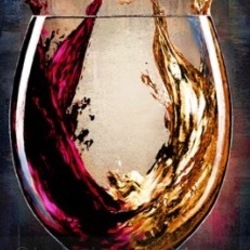
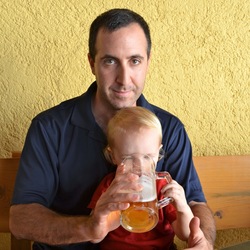


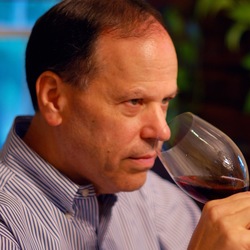




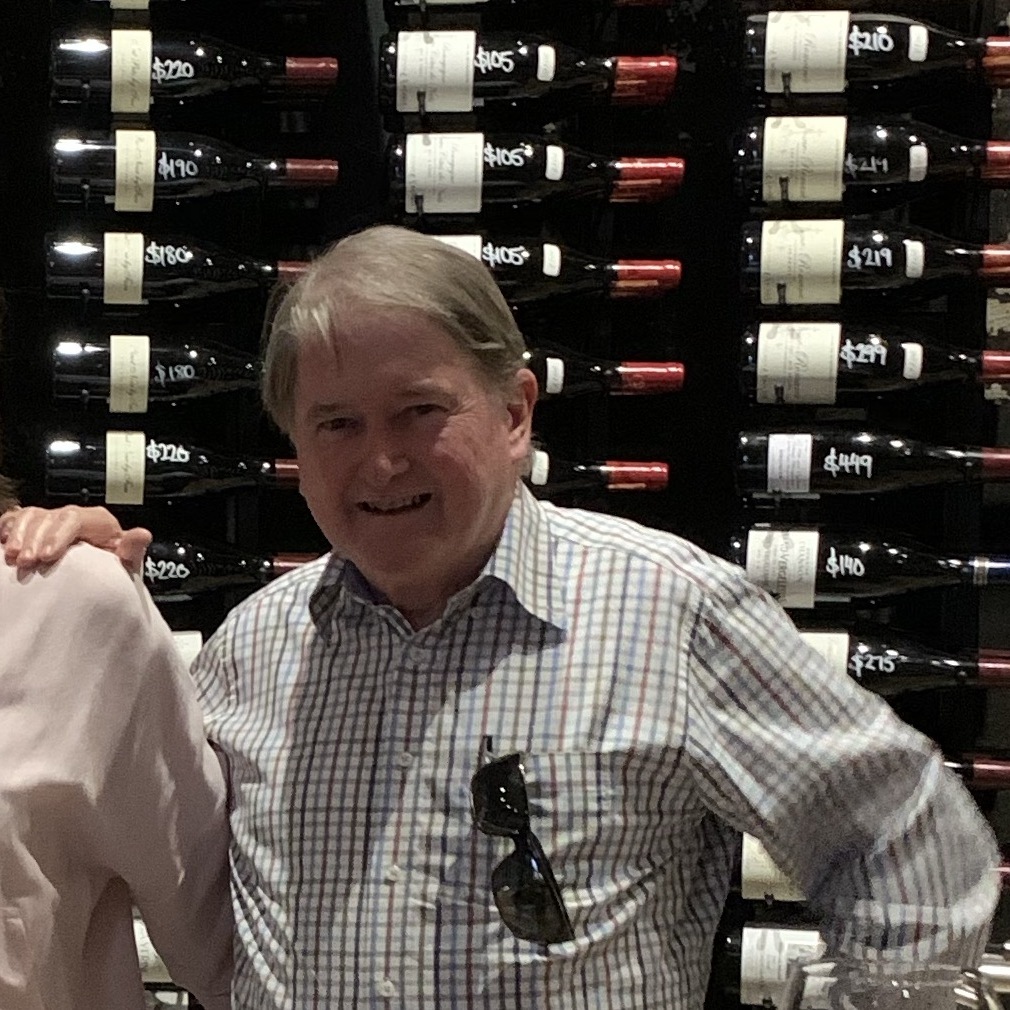

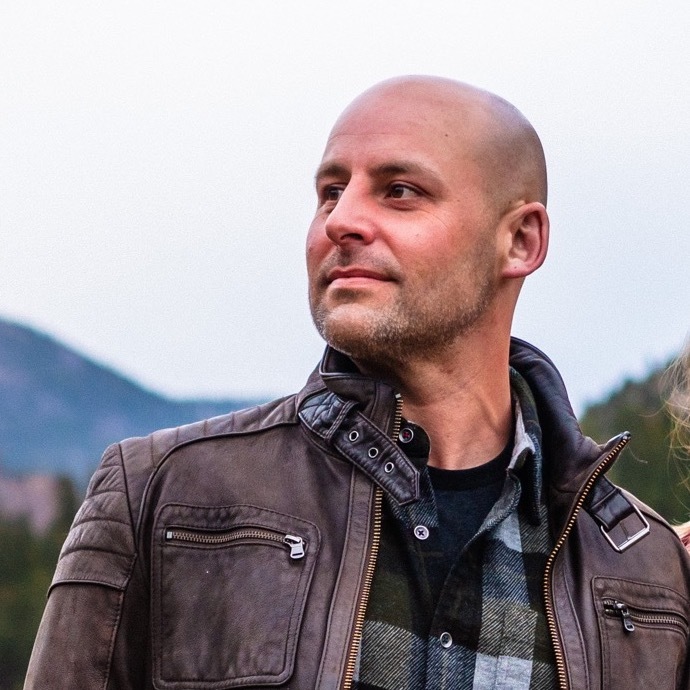






Peter Sultan
I discovered that the makers of this were intending to interpret femininity via their blend of syrah, garnacha, merlot & Cabernet. That they are also the children of two famed Priorat makers also makes sense: such an elegant, refined body of dark fruits, marked by both freshness & power. For 20$ this is just a remarkable bottle. I’ve tried earlier vintages, it’s no accident. — 4 years ago